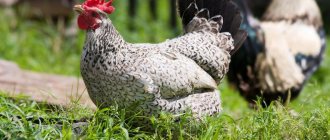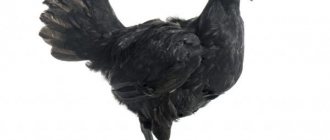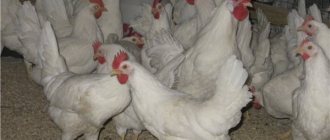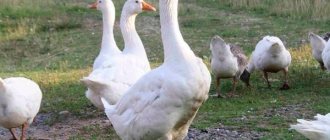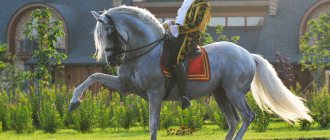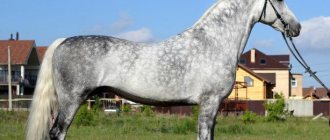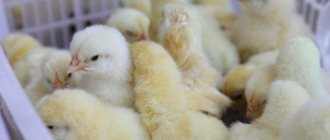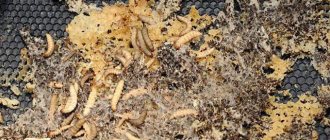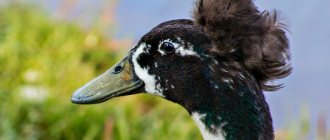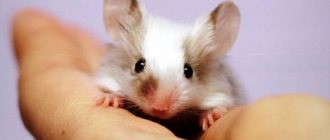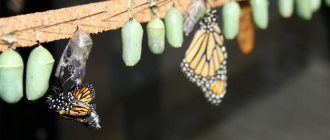The best choice among the variety of dairy goats is a breed bred in Switzerland called the Saanen. It is characterized by high productivity rates due to high milk yields and a long lactation period. This will allow not only to fully meet all the family’s needs for natural dairy products, but also to sell the surplus. This is a demanding and difficult animal to care for and feed, but all this is more than compensated for by its high level of milk yield.
History and origin of the breed
The breed received its name in honor of the town of Saanen (Switzerland). This breed is considered one of the best in terms of milk production. The breed does not have an exact pedigree - goats were bred through folk selection in the 19th century. The “breeders” were ordinary shepherds grazing cattle in the Swiss Alps. The breed, attracting breeders with its milk yield, quickly spread throughout the world.
Today there are several lines of the Saanen breed:
- American;
- Dutch;
- British;
- white;
- Russian.
In Russia, the first Saanen goats appeared at the beginning of the 20th century. The batch of goats brought to the USSR consisted of only 20 individuals, but it was with them that the history of the Saanen breed in Russia began.
Reproductive capacity
Most often, one female produces 2 kids in one offspring, but there are exceptions. The maximum offspring from one goat is 4 kids.
Farmers try to monitor the pedigree of the species, since when crossing with other types of goats, the amount of milk decreases, and individuals no longer have the ability to adapt to strong climate changes.
Description of Saanen goats
Based on the appearance of Saanen goats alone, a specialist will immediately identify a high-yielding breed. These goats are close to ideal in their measurements. The white, strong-boned animals look elegant – as befits high-producing dairy goats.
Exterior
Males and females of Saanen goats are polled. The Saanenian looks like a true standard of domestic goat. They have a well-developed, strong body and well-formed bones. At the same time, there is no coarseness or massiveness in their appearance; females look cute and neat.
Exterior features of Saanen goats:
- The body is wide and elongated.
- The head is beautifully sculpted, the muzzle is narrow.
- The ears are oblong, erect, slightly tilted to one side.
- The muscles on the thighs are poorly developed.
- The udder is large, pear-shaped. Nipples are well developed.
- The hooves are light yellow.
Every goat has a beard. Sometimes it occurs in females as well. According to the standard, it is not allowed for the ears to droop. But “earrings”—skin growths on the neck—are not considered a defect; purebred and outbred goats can have them. Experienced goat breeders prefer to remove growths to avoid injury.
In the last century, it was believed that the main distinguishing features of the Saanen breed were its snow-white color and hornlessness. But then the standards changed. Today, only 3/4 of the individuals are polled. Previously, it was believed that for a herd breed, horns were evil, since females could injure each other while sorting out relationships. But breeders have established that if only hornless individuals are bred, subsequent generations will develop infertility and hermaphroditism. Therefore, many farmers today leave horned individuals. And to make caring for animals easier, the horns of young animals are burned.
Size and weight
The maximum weight of Saanen goats is 55 kg. Goats are much larger - they can weigh up to 80 kg. These goats are the largest among dairy breeds.
Weight of kids:
- newborn goats/kids – 3.5/4.5 kg;
- 2 month old goats/kids – 9-10/11-12 kg.
Weight gain from birth to 2 months allows us to define this breed as precocious. The daily gain is 160 g. The parameters of Saanen goats are in Table 1.
Table 1
| Options | goats | goats |
| Body length | 81 cm | 84 cm |
| Height at withers | 78 cm | 95 cm |
| Bust | 88 cm | 94 cm |
| Height at the sacrum | 77 cm | 88 cm |
| Chest Width | 18 cm | 18.5 cm |
| Rear width | 17 cm | 17.5 cm |
| Live weight | 45-55 kg | 70-80 kg |
Standard
The ideal physical parameters of Saanen individuals are:
- The height of females at the withers is not less than 76 cm, weight is not less than 61 kg.
- The height of the goats is at least 81 cm, weight - from 77 kg.
- Fine and short coat with possible fringing on the hips and spine.
- Strong bones.
- Snow-white color. Light cream is allowed.
- The ears are set high and directed forward.
- Straight or slightly concave muzzle. The more pronounced the “Roman nose” is, the further away from the standard it is.
A dark color is considered a serious disadvantage if the goat is not a Sable. Spots more than two centimeters in diameter, as well as drooping ears, are grounds for disqualifying the animal.
Advantages
The Saanen goat is called the "Queen of the Dairy Goats" - and here's why:
- more milk is not obtained from any other breed;
- lactation lasts up to 11 months;
- milk ranks second in fat content (this parameter is higher only in Nubian goats);
- animals quickly adapt to various climatic zones;
- they do not have a specific smell;
- meat yield from each individual is up to 55% of body weight;
- From a female they get two or three kids a year.
A good option is to cross the Saanen goat breed with a regular one. The offspring inherits a considerable number of the advantages described above.
Goats
It is rare when four kids are born; usually two or three are born at a time. All of them are large: male goats weigh up to 5 kg, female goats - up to 4 kg. As soon as they dry, they are resettled separately. You can’t leave it on the suction: the kids won’t be able to drink all the milk, and the rest will burn out, reducing the goat’s productivity in the future.
If a goat breeder wants to dehorn those born with horns, the procedure must be carried out within the first two weeks. A period of three months is allotted for castration.
Growth is fast. Already at six months, goat kids reach a weight of 50 kg.
Baby goat licks his lips
Advantages and disadvantages of the breed
Advantages of the Saanen breed:
- High milk productivity. After the first lambing, females give 700 l/year.
- High fertility. A herd of 100 heads produces 180-250 kids.
- Long lactation. A goat produces milk 11 months a year.
- Fast weight gain.
- High fat content of milk.
- High adaptive abilities.
- They are excellent breeding material. Used to improve other breeds, to increase milk productivity.
- They can graze on difficult terrain - in mountains, ravines, etc.
- The meat of three-month-old goats is suitable for food.
Considering the excellent milk characteristics, all the existing disadvantages can easily be forgiven for Saanen goats:
- clubfoot;
- lop-bottomed;
- sabering is developed (exterior defect associated with the positioning of the legs);
- underdevelopment of muscles in the thigh area.
The breed is also “accused” of having a “Roman nose” and being too large in size. All these flaws are not an obstacle to the successful breeding of highly productive goats. This is the breed that farmers choose to get good milk yield.
Goat nutrition: what to feed purebred goats
It is worth saying that the diet of purebred goats differs from the diet consumed by ordinary goats. They will most likely not like the usual hay; they will be much more willing to eat legumes and grains. For the winter period, to feed livestock, you need to stock up on dried leaves of oak, birch, willow and linden; Saanen goats will eat them with great pleasure.
In order for the animal to produce as much milk as possible, you must not forget to feed the goats with vitamins; it is advisable that they are contained not only in preparations, but also in food, for example, these could be:
- Apples
- White cabbage
- Potato
- Carrot
- Buryak
Productivity characteristics
Saanen goats are bred to produce milk, so the main thing that interests breeders is milk production. Also important are points such as the quality of the milk and the conditions of detention.
The milk of Saanen goats is a kind of standard of dairy products. It is tasty, smells practically nothing - it has no foreign odors. Its fat content is 4-4.5%. Daily milk yield is 3.5-8 liters. Goat milk is an ideal raw material for making cottage cheese, cheese and butter.
Milk yield depends on the quality of feeding and maintenance of animals. Annual milk yield:
- The average for Russia is 600-700 l/year.
- Under ideal conditions and an enhanced diet - 1200 l/year.
- The record set by the Saanen breed is 2400 l/year. This result was achieved in the homeland of the breed - Switzerland.
The milk yield is calculated based on the annual lambing. Before lambing, milk becomes less. The more lambings, the higher the milk productivity of the goat. Maximum milk yield is observed after the fourth lambing. During this period, females can milk up to 2000-2500 liters of milk. The weight of the annual milk yield is 20 times more than the goat’s own weight.
Features of keeping the Zelensky breed
If the farm is not focused on breeding the breed, then it will be quite expensive to staff the entire livestock with Saanen dairy animals alone. Many people purchase just a few individuals for crossbreeding, which can significantly increase the productivity of ordinary domestic goats. Then the farmer will only have to select the offspring with the highest milk yield and cover them with Saanen purebred goats. This way you can get a cross with local goats, which will produce 750-1115 liters per lactation.
note
Even the most purebred Saanen goats can show high productivity results only under certain conditions. Basic conditions of housing and feeding must be provided for them, otherwise milk yield may disappoint the breeder.
Requirements for premises and contents
Ideally, animals of this breed are best kept in large herds, for which large farmers build spacious premises that reliably protect animals from drafts and winter frosts. The optimal temperature for keeping Saanen goats in summer will be about 18-20 degrees Celsius, and in winter up to plus six. It is better to build premises for such animals on an elevation, where there will be no increased dampness, which can cause various diseases, away from cesspools or manure heaps.
In the northern regions, the Saanen goat can grow a short undercoat, so the animals do not freeze. The main thing is to ensure high-quality ventilation, sufficient lighting and cleanliness. In small farms, in warm and comfortable barns, it is optimal to make a separate stall for each individual with a bed covered with straw. Breeding bucks should always have their own separate stalls. But permanent bedding also has its advantages, especially for small sheds in the middle zone.
It is imperative to arrange grooves along the room through which the slurry will flow into a special compartment (pit). On wet bedding, goats will inevitably start to get sick, so in all cases it needs to be changed regularly or simply thrown up, provided they are kept on a non-replaceable bedding. Humidity above 70-75% will be fatal for animals of this breed.
Decomposing litter, mixed with manure, will allow you not to worry about heating the room. It doesn’t hurt to equip a separate place for milking, especially if there is not one goat, but several. For farms with several hundred animals, it makes sense to purchase a “Carousel” system for machine milking, where the females will approach on their own, since concentrated feed is provided.
How and what to feed this breed
The diet of the Saanen breed of goats is slightly different from the usual, but without any overseas “stuff”. They don’t really like hay made from Russian forbs, which local outbred animals love so much. With great pleasure they eat legume straw, for example, pea or soybean. Feeding should be balanced and correspond to the quality of milk yield.
- Meadow or legume hay – 2-2.5 kilograms.
- Vegetables (zucchini, cabbage, pumpkin) and root vegetables (carrots, potatoes, beets, turnips) - 1.2-1.5 kilograms.
- Corn or forb silage – up to 1 kilogram.
- Feed and grain additives – 0.5-0.6 kilograms.
- Haylage – up to 0.5 kilograms.
Experienced breeders prepare special brooms for their pets in advance, as they love to eat young shoots of trees and shrubs, along with the bark. Oak, willow, linden, maple, willow, birch - all this can be tied in large bunches and hung in the attic. It is better not to feed the grain whole; it is better to grind it or steam it, so it will be easier for the goats to chew and digest it. Vitamin supplements, concentrated feed and bran should also always be in the diet if the owner wants to get maximum milk yield.
Comparison with other breeds
Several breeds of dairy goats are bred in Russia. All of them differ from each other in various parameters - milk yield, duration of lactation, degree of fat content of milk. Comparison of parameters of popular dairy breeds is in Table 2.
table 2
| Breed | Milk yield per day, l | Fat content, % | Duration of lactation, days | Average milk production, l/year | Adaptation to climate in Russia |
| Saanen | 5 | 3,7-4,5 | 300 | 900-1200 | + |
| Czech brown | 4-6 | 3,5-4,5 | 300-330 | 900-1200 | + |
| Nubian | 4-5 | 4,5 | 300 | 1000 | + |
| Alpine | 4 | 3,5 | 300-350 | 750-900 | + |
| Lamancha | 3-5 | 4 | 300 | 900-1000 | + |
| Gorkovskaya | 3 | 4-5,5 | 250-300 | 500 | + |
| Russian | 2,5 | 4,5-5 | 240 | 400-600 | + |
| Toggenburg | 2,5 | 3,5 | 200-240 | 500-800 | — |
| Cameroonian | 1,5-2 | 5,3 | 150 | 200 | + |
| Megrelian | 1-2 | 4,5 | 180 | 100-250 | + |
Chemical composition
This species is valued mainly for its high milk productivity, up to 9 liters per day, with a fat content of up to 5%.
Goats have their hooves trimmed every six months.
Content of vitamins and minerals in milk:
- Calcium - 28.60 mmol/l;
- Phosphorus - 14.69 mmol/l;
- Magnesium - 7.20 mmol/l;
- Vitamin C - 1.08 mg%;
- Vitamin E - 1.39 mg%.
Keeping and caring for goats
Saanen goats are kept using the stall-pasture method. The breed adapts well to cold weather, but does not tolerate heat and dampness - these climate features can cause the death of the entire livestock. Saanenians are demanding in terms of living conditions - in order to get good milk yield, it is necessary to create appropriate conditions for the animals. In warm weather, the herd grazes on pastures; in cold weather, it is kept indoors. Approximate duration of periods:
- pasture – 185 days;
- stall – 180 days.
Stall
When kept in stalls, goats spend a lot of time in the barn. The room must be free from dampness and drafts. Goats are usually kept in stalls without tethers.
Content requirements:
- humidity not more than 75%;
- temperature – not lower than 0°C;
- lots of natural light;
- high-quality ventilation system;
- availability of walking in the fresh air - make a fenced area;
- the presence of straw bedding in the stalls - from 50 cm thick;
- the presence of feeders and drinkers mounted on the walls;
- complete cleaning and disinfection of the barn 2 times a year.
Goats have their hooves trimmed every six months.
One person is enough to look after the goats. The litter is changed as it gets dirty. Biothermal processes that occur in the straw bedding lead to the generation of heat - this allows you to reduce the cost of heating the room.
Goats should not be kept in stalls without escape. They should receive regular exercise:
- in cold weather – 1-2 hours;
- in mild cold weather – 4-5 hours.
Benefits of walking outside:
- metabolism improves;
- immunity increases;
- wool quality improves.
The walk is canceled if:
- snowing;
- frosts are too severe;
- snow cover thickness more than 10 cm.
The barn can also be used in the summer for overnight stays. It is ventilated in winter and ventilated in summer. The temperature in it should not rise above 20°C - Saanenians do not like heat. When spring comes, the animals are transferred to pasture.
Pasture
You cannot suddenly send animals out to pasture; they must gradually get used to natural conditions. The herd should not be too large, as the animals will be restless, and, in addition, when there are many goats, it is difficult to pay attention to each - the incidence of disease often increases. The recommended norm of female goats per male goat is 25-50 individuals. When forming a herd, you should take into account that quantity cannot always turn into quality.
Requirements for grazing:
- It is necessary to open the walking period taking into account the temperature, climate and quality of the grass in the pasture.
- Goats should not fall out in damp areas - they will trample many useful plants.
- When the season has just begun, the herd should be released into well-lit areas, preferably on a hill.
- When releasing goats for walking, the hoof horn that appears during the winter in stalls is removed in advance.
- The herd is driven to pasture before sunrise. Only in early spring and late autumn they are kicked out later, when the cold dew has left the grass.
- Animals should not be exposed to the scorching sun. From 10 to 16 o'clock they take a break, driving them under the awnings.
- Goats are herbal gourmets. They will not eat grass that they do not like - they choose only the most delicious and juicy. Therefore, you should not send your herd to pasture with grass that goats do not like.
- Saanenians do not tolerate changes in atmospheric pressure. It's better for them not to graze in the rain.
- The pasture should not be given to the goats at their complete disposal - they will quickly deplete the area. It is necessary to use the areas in doses so that the grass cover is restored.
- The optimal walking area for a dozen goats is 2.5-3 hectares. In such an area, goats can feed for about 6 days, no more.
- To visualize the boundaries of the plots, it is recommended to place pegs.
- It is advisable to adjust the location of the herd relative to the sun - it should be behind or to the side. If the sun is in front, animals have a hard time finding the plants they need.
- While the animals are under a canopy, it is placed near the pasture; they can be fed with dried grass.
- The saturation time for goats on high-quality pasture is 6 hours. They spend the same amount of time chewing cud, and during this time they settle down on the ground and rest.
- Saanians grazing on pasture are given water 2 times a day. If the grass is lush and it’s not hot, you can limit yourself to watering once. The best time for watering in a pasture is early morning and a midday break. In especially hot weeks, when the grass becomes coarse, the goats are given additional water - 2 hours after the start of walking and 2 hours after the day's rest.
An important feature of keeping the Saanen breed is the refusal of ordinary grass. It is recommended to feed these goats with grains and legumes - artificial pastures are often sown for them.
During walking, a goat eats an average of 6 kg, a female goat - 8 kg. To provide goats with daytime resting places and night rest, rest areas should be organized. Parking lots are usually not fenced, but it is recommended to install portable barriers, with the help of which temporary enclosures are organized for counting goats.
Conditions of detention
In caring for goats, the following two points can be distinguished:
- comfortable living conditions;
- proper nutrition.
You must approach the choice of premises thoroughly and knowledgeably
So, the most important thing is that the room is spacious, well insulated and with high-quality ventilation
It is best to place the barn on some kind of hill, and if there is none, then create it artificially. This will help avoid flooding. The place where you decide to build a goat house should be open and sunny. In this simple way you will increase daylight hours and thereby significantly save on artificial lighting.
It is best to place the windows in the barn on the same line to avoid drafts, which goats are very afraid of. It is advisable to make windows on the south side, at a height of about 1.5 meters from the floor.
It is recommended to raise the floor in the barn a little and make it at a slight slope to allow liquid to drain. It is best to make the floor from concrete, as it is very durable and will last you a long time.
The walls of the barn are made at the discretion of the owners, but remember that wooden ones are warmer, but at the same time not as strong as brick ones. To avoid dampness, experts recommend covering the walls with roofing felt.
Make sure that there are no sudden changes in temperature in the room. In summer the air should warm up to about 18 degrees, and in winter it should not fall below 6 degrees.
With the onset of cold weather, the barn must be well insulated. It wouldn't hurt to make double walls. You also need to carefully close all windows, cracks and other holes through which the wind can blow.
Please note that in order to retain heat in the middle of the room longer, it is recommended to remove manure several times less often than it should be done in the hot season
For comfortable keeping in the middle of the barn, it is recommended to make beds on which the animals will spend a lot of time.
The barn should not be made very high; 2.7-2.8 meters is quite enough. Experienced farmers recommend whitening walls with lime in the fall and spring; it not only disinfects, but also helps get rid of annoying flies.
The ceiling in the barn must be strong and impenetrable to wind and air. It is best to make it from clay and, if possible, cover it with moss.
Feeding and diet
In order for goats to produce a lot of high quality milk, they need to be provided with a balanced diet. Goat diet:
- In the morning they give fresh hay.
- A few hours later - branches of birch, alder, willow.
- Pasture - feeding on grass. If there are trees and bushes nearby, then goats can feast on their branches and foliage.
- In the evening they give a mash with potatoes, bran and pasture.
Animals should be accustomed to both types of food - dry and fresh. In order to fully assimilate food, special bacteria must be developed in the stomachs of animals to digest specific food. New nutritional components are introduced into the diet gradually to avoid diarrhea and other disruptions in the gastrointestinal tract. Accustoming to one type of food lasts about a week. It is also necessary to smoothly switch from a winter to a summer diet - the animals are given time to rebuild their bodies.
Daily nutritional requirements
During the period of stall keeping, in order to obtain a milk yield of 5 liters, it is necessary to provide each goat with a complete and balanced diet. Approximate diets for goats kept in stalls are in Table 3.
Table 3
| Diet | Amount of feed, g |
| Option #1 | |
| oats | 300 |
| hay | 1500 |
| brooms | 1000 |
| sunflower cake | 400 |
| roots | 3000 |
| bran | 500 |
| salt | 15 |
| Option No. 2 | |
| hay | 2100 |
| succulent food | 2500 |
| concentrates | 800 |
| salt | 15 |
15 g of salt is a mandatory daily requirement. It is recommended to feed in the following proportions:
- concentrated mixtures – 40%;
- roughage – 20%;
- green feed – 40%.
Daily hay requirements for Saaners, taking into account age and gender:
- goat – 3 kg;
- goat – 2.2 kg;
- kid up to one year - 1 kg.
When feeding females, the reproductive phase and health status are taken into account:
- In dry conditions, to get 1 liter of milk, a goat needs 0.8 feed units and 30 g of protein.
- During lactation, to obtain 1 liter of milk you need 0.36 feed units and 55 g of protein.
Before starting (cessation of lactation), goats are transferred to a special nutrition system so that the kids are born healthy and strong. The emphasis is on protein nutrition. Here is a sample diet:
- hay – 1-1.5 kg;
- oatmeal mixture – 4 kg;
- concentrated food – 200 g.
Another option for a goat’s diet before starting:
- hay – 1.2 kg;
- oat-pea mixture – 3 kg;
- concentrated food – 100 g;
- pasture – unlimited.
Feeding with brooms
Saanen goats love to eat brooms made from branches. During housing, brooms and leaves are an important component of the diet. The daily consumption rate is one broom for each individual. For the winter, you need to prepare an average of 100 brooms per goat.
Rules for preparing brooms:
- Suitable trees are oak, birch, linden, alder, maple, aspen. The best option is willow. You can’t give too much birch trees - they provoke kidney diseases.
- Branches should be collected in early June. The recommended thickness of the branches is 1 cm. The ideal time for cutting is dawn, you can also cut the branches when the sun sets. During these periods, the branches are at their most nutritious.
- The chopped branches are laid out on the street to be saturated with vitamin D, which is formed under the influence of UV rays. After 3-4 hours, the dried branches are tied into a broom. Twine is used for tying. The broom should be up to 100 cm in length and up to 20 cm in width.
- Final drying is carried out in the attic or barn - brooms are hung on the walls. They are dried in this position for a month.
- In autumn, brooms can be replaced by fallen leaves. The collected leaves are dried for 5 days, stirring from time to time. Then they are sent to the attic for storage. There the foliage is poured onto a fabric or straw bedding.
Thanks to feeding branches, it is possible to improve rumen digestion in goats - this is extremely important during the period of stabling.
Feeding tips
Domestic farms, which have been growing the Saanen breed for many years, have managed to accumulate considerable experience in breeding them. They also have several important notes on feeding, which they willingly share with beginners:
- To increase the energy value of milk, goats should be fed chopped hay. The resulting milk will be more nutritious and can be sold at a higher price.
- Be sure to provide mixed feed, preferably concentrated mixtures and dietary supplements.
- Be sure to hang a salt lick near the feeder.
- It is advisable to dry the hay before feeding. Optimal humidity is 16-17%.
- The best food for Saanen goats is bean and pea straw.
- Access to water must be available 24 hours a day.
- Food for kids and female goats must be flavored with bran.
- Never give goats scraps from the kitchen.
Nutrition
Saanen goats are fed intensively due to the large amount of milk produced. In the summer they receive green food, grain, and mixed feed. In winter, instead of forbs, hay is included in the diet. The volume of feed is 20% higher than the diet of meat and dairy indigenous animals with average milk yield.
In private farms where a small number of animals are kept, their menu is supplemented with mash, which includes bread crusts, boiled cereals, leftover food, beets, and other vegetables.
Feeding Saanen goats
When keeping goats industrially, protein, vitamin and mineral supplements are included in the animals' diet. To obtain high milk yields in summer up to 30%, in winter up to 40% of the total volume of goat food is compound feed. These include:
- barley, oats, wheat bran;
- sunflower and camelina cake;
- feed phosphate (mineral feeding);
- sodium chloride (table salt);
- microelements, vitamin supplements.
At least 60% of the total diet should be roughage. A decrease in their quantity leads to problems with the digestive system.
Breeding Saanen goats
The breed is prolific and is often used for breeding and improving the milk characteristics of other breeds. Reproduction rules:
- At least 200 days must pass between the last lambing and insemination.
- If there is no breeder goat, artificial insemination is used.
- Females are released 2 months before goatling.
- Females begin to be inseminated at the age of 12 months, not earlier. Recommended age: 14-16 months.
- Special premises for lambing are not required.
With proper care, there are no problems with breeding Saanen goats.
Breeding principles:
- Mating is carried out when the female is in heat.
- Once the doe is covered, the buck can be removed from her.
During the three months of pregnancy, the goat is fully milked. Then the frequency and volume of milk production is gradually reduced until lactation completely stops. The goat must gain strength before lambing. If you do not stop milking and do not start the goat, then the kids will be born weak, and the goat will suffer.
For successful breeding it is important to have a good sire goat. It, like dairy goats, must be taken from reliable breeders. Before buying expensive purebred Saaners, you should try raising regular goats. A Saanen goat costs the same as a cow. And if a mistake is made in the growing technology, you can suffer big losses.
Born goats are raised in two ways - they are immediately weaned and transferred to artificial feeding, or they are kept next to the goat until 4 months of age. After 4 months, the kids have a stronger digestive system, and they are gradually transferred to roughage. This method reduces the milk productivity of the livestock and is therefore rarely used.
When keeping a kid next to a goat, the number of milking days per year is 210 days. With early weaning, the lactation period is 300 days a year.
Reviews about meat and milk
When it comes to talking about goat meat and milk, opinions are divided. Most goat breeders claim that the milk and meat of Saanen goats do not have the specific smell of goat meat. It is believed that Saanen goat milk does not cause allergies and helps the child’s body cope with this disease.
The meat of young animals contains more cartilage than pork or beef. This fact speaks in favor of goat meat. Collagens and calcium contained in cartilage are beneficial for the human body, especially for joints.
Maria from Orel says: “We lived with our grandmother in the village for a whole month. We drank goat's milk with pleasure. The 1.5-year-old child has noticeably gained weight and gained the missing kilograms. Everyone in the family’s complexion has improved.”
A mother from Omsk writes that her second child is allergic. He couldn’t tolerate ready-made mixtures and broke out in a rash. The child grew up, and his mother switched him to Saanen goat milk. “Ugh, ugh, ugh, the sores are gone, I myself grew up on goat’s milk, ate porridge, drank it,” says my mother.
Doctor Natalya N. believes that it makes no difference what kind of milk children and adults are given: cow, goat or mare. From the point of view of infectious safety, milk from a package is preferable to milk obtained from an animal.
According to messages on forums, there is no consensus on goat milk. We can say unequivocally that it cannot serve as a replacement for breast milk. Before giving this milk to young children, especially those who are sick or have allergies, you should consult a doctor.
Marina from Ufa complains: “My parents keep Saanen goats. The meat is stewed and pilaf is prepared. I walk into the house and smell a slight smell. To me, lamb smells worse. But the meat is very tasty."
Olga from Ulyanovsk writes that goat meat is different from pork, beef and lamb. But not for the worse. By boiling the meat of a young animal, stewing, or preparing cutlets, delicious dishes are obtained. The secret to obtaining high-quality meat, Olga believes, lies in proper professional slaughter and skinning of the carcass.
Speaking about goat meat, all connoisseurs of this product emphasize its culinary and nutritional superiority over other types of meat. The only thing is that you need to choose the right animal, skillfully slaughter it, and store the meat without freezing it.
Maintenance, care and nutrition of goat kids
As soon as the baby goat is born, the mother immediately licks it. The torn umbilical cord should be tied with harsh threads, leaving 1 cm from the place to be tied. Then the edges of the umbilical cord are lubricated with brilliant green or iodine.
If the kids are going to be separated from the goat for artificial feeding, then immediately after lambing the colostrum must be expressed, which should be given to the newborn 40 minutes after birth. Colostrum is necessary for newborns to activate the immune system. But kids are quickly switched to artificial feed to save milk.
Colostrum and milk are diluted with water - you need chilled, boiled water, in a 1:1 ratio. They feed babies through a pacifier. The goats are given more food - the more they eat, the more productive they will be. Goat kids have much less milk consumption. When the young animals are 2 months old, they begin to feed from a bowl.
It is important to remember that overeating can cause eating disorders in children. To prevent them from becoming addicted to milk, you need to limit its consumption. Kids should not drink more than 2 liters of milk per day. Weaning off milk is done gradually. Table 4 shows the feeding schedule for a newborn goat fed artificially.
Table 4
| Age, days | Number of feedings per day | Milk, ml | Liquid oatmeal, g | Concentrates, g | Root vegetables, g | |
| for one feeding | per day | |||||
| 1-2 | 4 | 200 | 800 | — | — | — |
| 3 | 4 | 225 | 900 | — | — | — |
| 4-5 | 4 | 250 | 1000 | — | — | — |
| 6-10 | 4 | 300 | 1200 | — | — | — |
| 11-20 | 4 | 300 | 1200 | 200 | — | — |
| 21-30 | 4 | 300 | 1200 | 300 | 30 | — |
| 31-40 | 3 | 350 | 1050 | 500 | 50 | 40 |
| 41-50 | 3 | 250 | 750 | 700 | 100 | 60 |
| 51-60 | 3 | 150 | 450 | 800 | 150 | 100 |
| 61-70 | 3 | 150 | 450 | 800 | 200 | 200 |
| 71-80 | 3 | 150 | 450 | — | 200 | 250 |
| 81-90 | 3 | 150 | 450 | — | 300 | 250 |
It is forbidden to give goat milk from goats with mastitis. With this disease, colostrum is infested with pathogenic bacteria. Treatment of mastitis with antibiotics lasts 5 days - during this time colostrum is unsuitable for food. In such an extreme case, you need to have frozen colostrum - it can be stored for a long time in the freezer.
Before milking the goat, wash the udder with clean water and soap - for example, with “Children’s”. The first stream is poured into a separate container to be thrown away. Colostrum is first filtered through 3-4 layers of gauze, and only then given to the kid. Dishes used for feeding - milking tray, bowl, jars - are thoroughly washed with hot water and soap. Store dishes upside down.
If you feed a baby goat from a bottle, then it is very difficult to wean it off. In order not to bother with feeding from a bottle, you need to immediately teach him to eat from a bowl. Cooled colostrum can be heated, but it should not be overheated - at temperatures above 40°C, immunoglobulin and other valuable proteins are destroyed.
The norms for natural feeding of a kid depending on age are in Table 5.
Table 5
| Day | Number of feedings | Single serving, ml |
| 1-2 | 6 | 50 |
| 3 | 5 | 70 |
| 4 | 5 | 100 |
| 5-30 | 4 | from 100 to 1500 (gradually increase the norm so that the kid eats 1500 ml per day until the end of the month) |
More tips for caring for a baby goat:
- After feeding the baby goat, you must wash its face with water and then wipe it with a dry, clean cloth. Otherwise, pathogenic bacteria will multiply in the milk that has dried on the face.
- On the 10th day, the goats are offered boiled water. It should be slightly warm. Give water between feedings. A bunch of hay is hung near the feeding area.
- On the 20th day, you can offer the goat finely grated vegetables - cabbage, carrots, pumpkin.
- Oatmeal is used for complementary feeding; it cannot be replaced with semolina. Porridge is made from oatmeal in milk.
- At 4 months, instead of porridge, goat kids are given a crushed grain mixture consisting of oats, wheat and barley, taken in equal parts.
Complementary feeding is introduced no earlier than the 20th day - so as not to burden the goat’s digestive organs. If you give complementary foods earlier, animals gain weight worse, since unusual food impairs the digestibility of milk.
Secrets of experienced breeders
- In order to save milk and avoid overeating, goats are transferred to artificial feeding immediately after lambing.
- Be sure to make feeders with limiters: this way the goat will not be able to scatter food under its feet, because it will not eat fallen and trampled hay! H
- To ensure that the drinking bowl is always clean, screw a large bucket to the wall, and place a smaller one in it as needed - with water, root vegetables or concentrated feed. The bucket is easy to remove and wash!
- It is most convenient to milk a goat on a special table. To do this, make a low platform and place a feeder at the end.
Milking goats
Highly productive Saanen goats can be milked using either of two methods:
- Manually. This option is suitable for small farms. Manual milking technique - holding the nipple with your index finger and thumb, pull it down. In order for milk to flow, movements must be repeated in a certain rhythm.
- Machine method. Mainly used in large farms. The devices “Burenka” or “Belka-1” are usually used.
Goats quickly cease to be afraid of machine milking. Already after the third time they stop being nervous when the device is turned on.
The number of milkings is directly related to the raising of kids:
- If kids are transferred to artificial feeding, then the first week after lambing, the goat is milked 5 times a day, gradually the number of milkings is reduced to 3 per day.
- If suckling-milking technology is used, the female begins to be milked only from the 8th week. The number of milkings is 1 time per day. When the kids completely switch to the adult diet, the number of milkings is increased to 2 per day.
Tips for proper milking:
- The goat must be trained to stand still during milking. To do this, she is always milked in one place.
- Before milking, be sure to wash your hands. Nails should be trimmed short to avoid damaging the udder.
- You need to put food and water in front of the animal - enough to last for the entire milking time. While she is being milked, the goat will eat.
- During milking, you should praise the goat - these smart animals perfectly understand intonation and kind words.
- It is advisable to train the goat to stand still in advance - 3 months before lambing.
- To keep your nipples elastic, they need to be massaged regularly.
- In summer, a goat needs to be milked at least three times a day - lactation increases with fresh and juicy feed.
- Milking should be regular - then milk yield will be stable.
- In cold weather, when feed consumption is reduced, the number of milk yields can be reduced to 2 per day.
Life expectancy, reproduction cycles
These goats live for about 10 years, reaching sexual maturity between 3 and 12 months. The breeding season is in autumn, the female's cycle lasts from 17 to 23 days. Estrus lasts from 12 to 48 hours. Pregnancy - from 148 to 156 days.
The buck sniffs the air to determine whether the female is in estrus, stretches her neck and head upward and wrinkles her upper lips.
Diseases, treatment and prevention
If Saanen goats are provided with quality care, the risk of disease will be minimized. However, it increases during lambing and the transition from confinement to grazing. To prevent illness during this period, it is recommended:
- After lambing, place the goat in a separate stall, monitoring its condition. At the first signs of lethargy and lack of appetite, you need to call a veterinarian. Perhaps the amniotic sac has not completely receded, and the weakened body needs treatment.
- When the transition to pasture begins, there is a risk of poisoning from inedible grasses. Goats are well versed in herbs, but they often pick up poisonous herbs - they are not dangerous in small quantities.
Symptoms of poisoning:
- vomit;
- frequent urination;
- rapid heartbeat;
- hard breath.
If similar symptoms appeared in several goats grazing on pasture at once, they were probably poisoned by chemicals used in agronomy. It is important to carefully examine the area where the goats will graze before releasing them there.
The most common diseases of Saanen goats, their symptoms, treatment and prevention are in Table 6.
Table 6
| Name | Signs of the disease | How to treat? | Prevention methods |
| Acute rumen tympany |
|
|
|
| Poisoning |
|
|
|
| Necrobacteriosis of the hoof |
|
|
|
| Mastitis |
|
|
|
| foot and mouth disease |
|
|
|
A common problem in dairy goats is cracked teats. The reason is chapping. This problem usually occurs in goats that have recently lambed. Separating the goat from the herd - this is recommended for all goats after lambing - and careful observation will help prevent the problem.
Cracks can also be caused by improper milking, rough bedding, or injury to the udder. The cracks are treated with a solution of boric acid - take a teaspoon of powder and dilute it in boiled warm water. Or they lubricate the cracks with antiseptic ointments, which the veterinarian will prescribe. Prevention of cracks:
- lubricating nipples with Vaseline;
- As soon as the slightest abrasions appear, immediately lubricate them with antiseptics.
If there is damage to the animal’s body, the wound is washed with potassium permanganate (a weak solution is needed), lubricated with iodine, sprinkled with mothballs, and if necessary, bandaged.
It is important to ensure the prevention of helminthiasis. To rid animals of parasites, they are given carbon tetrachloride. For prevention, deworming of all goats in the herd and dogs used by shepherds to herd the herd is organized. For another week, after the course of treatment, it is necessary to neutralize feces.
Frequent illnesses
Saanen goats rarely get sick if proper care is provided, but sometimes ailments occur:
- Poisoning . If an animal eats a poisonous plant, it may cause vomiting, increased urination, blurred vision, and restlessness.
- Cracked nipples.
- Listeriosis is a dangerous infection for people. A sick goat faints, staggers, and shakes in convulsions. She should be killed. Meat can only be eaten after boiling for two hours.
- Necrobacteriosis affects the hooves due to high humidity. A veterinarian will be required.
- Helminths . Medicines required.
It is also necessary to treat animals against blood-sucking parasites.
What to look for when choosing a purebred goat?
To breed Saanen goats, you need to buy producers in reliable places - at breeding farms. But for many people who want to have Swiss goats, a trip to a breeding farm is too difficult a task; they will have to travel very far. Therefore, most interested parties buy livestock from farmers.
When buying goats from private farmers, we are not talking about a 100% purebred breed - no one gives guarantees here. But knowing a few signs, you can increase your chances of acquiring a purebred individual. When choosing Saanen goats, pay attention to the following points:
- Wool. It should be snow-white - without any tint. The presence of shades indicates an admixture of foreign blood. Or let the seller reduce the price - no one will pay for half-breeds as for purebred goats. You should also pay attention to the villi - they should be short and shiny. If the coat is lackluster and matte, the animal is probably suffering from something.
- Back. It should be smooth. If an animal has signs of “humpback” or “concavity”, it is not a Saanen breed.
- Height at withers. Among Saanians it is no less than 75 cm already at the age of one year. Growth may be less if the conditions of detention were violated. Such animals, even purebred ones, will produce lower milk yields.
- Age. You should not adopt a goat after the 4th lactation. At this age, milk yield begins to decline.
- Milk. It should not have any specific odor. If the milk smells, the animal is poorly cared for. Usually the smell of milk appears when goats are kept together with goats.
To choose a goat, and even a purebred one, you need to have at least some experience in breeding these animals. An inexperienced buyer may be sold an ordinary white goat under the guise of a Saanen individual.
Mating - features of the breed
By the age of seven to eight months, young females of the Saanen breed look fully formed, and in fact they are. At the age of six months they are ready to accept a goat and give birth to offspring, but most likely it will be weak and non-viable. Therefore, experienced breeders recommend waiting up to a year until the female grows up and gains the required weight of up to 60 kilograms. The gestation period for this breed lasts five months, which is equal to 150 days. However, you can expect delivery on days 142-154.
Types of mating
Adult animals that have already given birth most often come into heat at the same time as before, sometimes with a difference of two weeks or a month. The interval between hunts for this breed is 18-21 days, and the process itself can last from one to five days. The onset of readiness for mating can be determined by the goat's restless behavior, refusal to eat, frequent wagging of its tail and arching of its back. There are several options for inseminating goats.
- Experts call artificial insemination the most advanced method, in which the goat is not allowed to contact females at all. Such options are suitable for breeding.
- Manual mating is practiced most often. For her, a male goat and a female goat are selected in advance and mating takes place in a special pen.
- In free mating, goats graze in a herd and are kept together, without separating females from males. Then the bucks cover the females without human intervention. It is better to leave such options for small farms in which the purity of the breed of the offspring is not important.
It is optimal to breed Saanen goats in the fall, even if they come into heat in the spring. This way, offspring can be obtained by spring, and such kids are considered stronger, more tenacious, grow faster and gain weight.
Features of lambing in the Saanen goat
Most often, goats of this breed give birth on their own, quite easily. However, the owner must be on guard. Most often, two or three kids are born, the first goes forward with its head and front legs, and all subsequent ones go in the opposite position. The approach of lambing can be determined by the behavior of the female; she becomes excited, restless, can run and scream constantly.
Immediately after lambing, as soon as the kids are dry, it is best to separate them from the queens and place them in a special goat pen. They may not be able to drink all the milk, and it will burn out in the udder when kept together. However, do not forget that, a couple of hours after birth, you should definitely give the young goats a drink of their mother’s colostrum, which will trigger the immune mechanism that the newborn goat does not have before.
What to look for when buying a purebred Saanen goat
In order not to make a mistake when choosing animals for your farm, you need the Saanen goat to fully comply with the characteristics of the breed. If you don’t have your own experience, it’s better to rely on the opinion of a specialist, as well as the documents that are provided upon sale.
- Purebred Saanen goats are exclusively white, slightly yellowish or light beige. The skin patches should be covered with snow-white hair without undercoat in warm climates and with short undercoat in northern regions.
- This breed has fairly large representatives, with straight, strong legs and a powerful body.
- The muzzle of such goats is quite narrow with a large forehead; they can be horned or polled. Males predominantly have large horns curled back.
- The ears of purebreds are erect and directed forward. Hanging ears are a sign of a cross with other breeds.
- Males in most cases have a thick, long beard; in females it may be smaller or absent altogether.
When choosing an adult female, pay attention to the udder; it should be large, round, pear-shaped with well-developed nipples. It doesn’t hurt to judge by smell; Saanenians usually do not have a pungent aroma; even goats only smell slightly when hunting. The milk of such goats will also not have characteristic aromas, which can be regarded as a plus for the breed.
Frequent diseases in the breed
If the keeping of Saanen goats is organized correctly, and the diet is regular, varied and balanced, then they rarely get sick. However, anything can happen, so it’s worth listing exactly what ailments can cripple your pets.
- When kept in a pen for a long time or during grazing, various poisonings are possible, since goats simply “forget” which plants are best not to eat. This may include vomiting, restlessness, frequent urination, and blurred vision.
- Injuries and cracks in the nipples, unfortunately, are inevitable, so you need to be prepared for this. It is optimal to isolate the animal until the veterinarian arrives and try to secure it so that it does not harm itself.
- Necrobacteriosis, that is, necrotizing hoof disease, occurs only where the humidity is excessively high. At the first sign of trouble with the hooves, call a doctor, otherwise you may lose the entire herd.
- Listeriosis affects the nervous system of goats. There is loss of balance, circular movements, convulsions and fainting. This is an infectious disease, it is dangerous for humans, therefore affected animals are immediately isolated and killed. The remaining animals are vaccinated. The meat is edible only after two hours of cooking, and the milk should be thoroughly boiled.
- On pasture, Saanenki can become infected with a variety of parasites, which can be dangerous both for the animals themselves and for humans, so it is worth regularly carrying out preventive measures.
Blood parasitic diseases can also occur, which are transmitted by mosquitoes, ticks and goat lice. At the first sign, it is best to treat the entire livestock, since insects not only cause inconvenience to animals, but also carry infectious diseases such as encephalitis. In general, the breed is quite resistant to a variety of pathogens if proper maintenance, care and feeding are provided.
Disadvantages of the breed
The breed really has a lot of advantages, so all the disadvantages pale in comparison. Many are ready to attribute the frightening appearance of large horned breeding goats, weighing more than a hundredweight, to the disadvantages, but this option is clearly far-fetched. However, Saanen goats still have some disadvantages.
- Animals are quite demanding when it comes to nutrition, which must be balanced, varied and regular.
- Goats definitely need a warm, clean and bright room during the cold season; they cannot winter in open pens.
- The high cost of breeding animals with documents can become an obstacle to breeding the Saanen breed.
Many small owners do this: they purchase one breeding goat, which they cross with local goats. Therefore, the most productive offspring with all the characteristics of the breed are carefully selected, which are again covered by a purebred goat. In this way, you can get mestizos with very outstanding productivity indicators.
Information to note
Useful information for novice livestock breeders:
- Goats will not pick up food that is lying on the bedding. Unless they get very hungry. But animals cannot reach such a state. To prevent food from falling on the floor, you need to make the feeders correctly - they should be comfortable for the goats and nothing should fall out of them.
- A slight decrease in temperature in the stall is not critical, but the presence of drafts is unacceptable. Drafts are a common cause of illness in Saanen goats.
- The stall should be clean and dry, and the bedding should be changed every day.
- During the winter season, artificial lighting should be turned on. Daylight hours should be at least 10 hours.
- The diet needs to be adjusted - you cannot limit yourself to one recipe or nutritional norm. Everything is very individual, feed and norms vary depending on age, type of maintenance, lactation period, gender and other factors. It is necessary to either increase the amount of succulent feed, or, on the contrary, reduce it by adding dry hay to the diet.
- Overeating, as well as undereating, is harmful to Saanen goats. It is necessary to control their nutrition while walking. To prevent the goats from trampling the pasture, you can keep them in a pen and bring in feed from the area. If there is a lot of pasture land, the goats are simply moved from place to place more often.
To take full advantage of the highly productive Swiss goats, you will have to take care of creating the appropriate conditions. If purebred Saaners are not provided with a balanced diet, exercise and a warm, clean barn, they will produce no more milk than an ordinary goat.
0
0
Copy link
Kinds
The animals from Saanen belong to the species of domestic goat (Capra hircus), which, according to the biological classifier, is included in the genus of mountain goats (Capra). As a result of selection, the Saanen breed was divided into several lines. The most famous:
- Swiss Saanen goat;
- Romanian white banana
- American Saanen goat;
- Saanen Nubian goats;
- British Saanen goat;
- New Zealand or sable goat;
- Russian white goat.
There are several local varieties of the Saanen goat in Switzerland. Unlike the canonical breed, they are smaller and weigh about 50 kg. The skin may not be pure white. The main advantage of local variants of the Saanen breed is adaptation to local conditions.
Chocolate-colored Saanen goat, another name for sable
The standard color for Saanen goats is white. In New Zealand, animals are cultivated in which the gene responsible for brown color predominates. As a result, New Zealand goats are not only white, but also brown, brown, and black. In 2005, this breed line received recognition from livestock breeders.
Description of the breed
Saanen goats are very difficult to confuse with other breeds of their relatives due to their specific, well-recognized appearance.
Sizes of individuals
Pure white animals usually lack horns or are hornless. Compared to other goat breeds, Saanen goats are quite large:
- adult males can weigh up to 100 kg;
- females that lamb 2-3 times reach a weight of 85 kg.
The average height of animals at the withers is approximately 90 cm. Goats are distinguished by a more luxuriant, well-developed and beautiful mane, as well as a characteristic beard. But goats have short hair that fits tightly to the body.
At the same time, the physique of Saanen goats has features characteristic of dairy breeds - if the body is quite narrow in front, then it widens in the back. In an animal located on a flat plane, the withers and sacrum are approximately at the same level, forming a straight line.
Body structure
A characteristic feature of this breed is the structure of the animals’ limbs. Their legs are very strong and quite long. The hooves are distinguished by their mobility, marked by the presence of strong hoof horns on the legs.
Thanks to their hooves, animals remain resilient for a longer period of time during long journeys to new, more fertile pastures. Therefore, goats have the opportunity to find food in areas that are inaccessible to other animals. Saanen goats can be found in mountain pastures, forests and ravines.
Saanen goats are distinguished by their narrow and light bones and thin skin, on which folds can easily form. There are other features of the appearance:
- on a long and thin neck there are often formations in the form of “earrings”;
- the voluminous belly has a rounded shape, it houses developed intestines and stomachs;
- wide spaces of intercostal placement;
- clear visualization of hungry pits;
- the presence of clearly visible vessels in the lower abdomen, which are directed to the udder area.
Characteristic features are also inherent in the udder itself. It is quite developed and stands out for its roundness. There is no noticeable division into 2 parts. The udder is located in a position pulled towards the body and, as a rule, does not hang down to the ground, and therefore does not create difficulties for animals when moving through difficult terrain.
Nipple length is average. They have a conical or cylindrical shape. They tend to stick out to the sides. The structure of the udder can reveal the presence of a protrusion at the rear. This part of the body is covered with a thin layer of skin, on which sparse and fine hairs are visible. The vascular network can be seen through the skin.
It is also possible to determine that it is the Saanen goat that is in front of the farmer by the following signs:
- white skin, which attracts attention with its pink tint;
- light head, which looks small against the background of the whole body;
- the head of males is distinguished by its massiveness and wide convex forehead;
- the profile of the skull has a concave shape;
- most individuals lack horns, moreover, their presence is considered an undesirable feature;
- The medium-length ears are of the erect type. have high mobility;
- oval-shaped eyes, the eyelid fits tightly to the eye with an elongated and slit-like pupil;
- The short tail lacks fat deposits and exhibits mobility, oriented upward or in a horizontal plane.
Habitats
Saanen animals have become widespread in Swiss, British, and French farms. They are bred by farmers in the United States, South Africa, and Australia. The number of livestock of this breed is present in Ukraine, Moldova, and Belarus. On Russian territory, goats can be found in a number of regions, including Moscow, Novosibirsk, Leningrad, and Ivanovo. The breed is popular in the Krasnodar and Stavropol regions.
